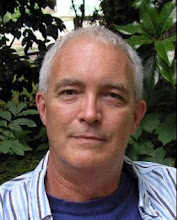…from all the financial angst. From Jon Stewart:
http://www.youtube.com/watch?v=wQK1al91drs
Thursday, September 25, 2008
Tuesday, September 23, 2008
Wednesday, September 10, 2008
Psychological Perspective
And now, another broad (and focused) view on American politics from psychologist Deepak Chopra:
http://www.chopra.com/node/1064
http://www.chopra.com/node/1064
Of Diversity and Demographics
The Republicans may have achieved the impossible in St. Paul: making Minnesota whiter—at least for four days—but there is another issue increasingly gnawing at the soul of the Republican Party too. Consider this sober, balanced article by David Frum, a fellow at the conservative American Enterprise Institute. Four pages worth reading. Try just the first, although it gets better. A welcome, thoughtful consideration for those eager for a break from the barrage of shouting and sound bites:
http://www.nytimes.com/2008/09/07/magazine/07Inequality-t.html?_r=1&th&emc=th&oref=slogin
http://www.nytimes.com/2008/09/07/magazine/07Inequality-t.html?_r=1&th&emc=th&oref=slogin
Friday, September 5, 2008
You Can Bet on It!
With money.
Legally.
Fortune magazine reports that Intrade: The Prediction Market is remarkably accurate in predicting the outcomes of political, economic, weather, and other trends and events. Buy and sell shares in definite conclusions to current questions. Or just watch. http://www.intrade.com/
Legally.
Fortune magazine reports that Intrade: The Prediction Market is remarkably accurate in predicting the outcomes of political, economic, weather, and other trends and events. Buy and sell shares in definite conclusions to current questions. Or just watch. http://www.intrade.com/
Monday, September 1, 2008
And Some Credit Too
Friday night I had a date of a mixed nature (but I won’t get into that). Nick, we’ll call him, had a story to tell.
In the 1940s, his father, John, and John’s boyfriend, Paul, graduated from college, and then together entered a Dominican monastery. As monks, they continued their relationship. After eight more years, they broke off the relationship. Paul left the monastery, and a few years later, so did John. John befriended a woman who suffered ongoing challenges from a bout of polio in her youth, and the two of them, sharing different differentnesses, developed a platonic friendship.
Their shared camaraderie, honesty with each other, and separate longings to have a family grew. Recognizing then current options, they decided to marry and produced and raised two sons. It was only after Nick's own college graduation that his parents told him their true back-story and the nature of their supportive marriage.
Much could be said here about the nature of love, sex, family, and practicalities in mid-Twentieth-Century America, but what struck me was something else. The story reminded me of two gay couples I met in the 1980s—how they had fallen in love in the 1960s in monasteries, a story they claimed was common in Catholic enclaves of Brothers. Their stories played out a decade later than John and Paul’s. At a time when society was changing, they too eventually left the protective walls of their monasteries—but as couples. By the time I met them, they had continued their full partnerships in the outside world for more than a decade.
Much is said, and rightfully in condemnation, about predators who hide or hid in the skirts of Mother Church, but credit should be given for the silent role Catholic clergy communities played in the years before society was accepting—for centuries, actually—in nurturing and protecting loving, homosexual relationships.
In the 1940s, his father, John, and John’s boyfriend, Paul, graduated from college, and then together entered a Dominican monastery. As monks, they continued their relationship. After eight more years, they broke off the relationship. Paul left the monastery, and a few years later, so did John. John befriended a woman who suffered ongoing challenges from a bout of polio in her youth, and the two of them, sharing different differentnesses, developed a platonic friendship.
Their shared camaraderie, honesty with each other, and separate longings to have a family grew. Recognizing then current options, they decided to marry and produced and raised two sons. It was only after Nick's own college graduation that his parents told him their true back-story and the nature of their supportive marriage.
Much could be said here about the nature of love, sex, family, and practicalities in mid-Twentieth-Century America, but what struck me was something else. The story reminded me of two gay couples I met in the 1980s—how they had fallen in love in the 1960s in monasteries, a story they claimed was common in Catholic enclaves of Brothers. Their stories played out a decade later than John and Paul’s. At a time when society was changing, they too eventually left the protective walls of their monasteries—but as couples. By the time I met them, they had continued their full partnerships in the outside world for more than a decade.
Much is said, and rightfully in condemnation, about predators who hide or hid in the skirts of Mother Church, but credit should be given for the silent role Catholic clergy communities played in the years before society was accepting—for centuries, actually—in nurturing and protecting loving, homosexual relationships.
Of Hub Caps and the Dental Arts
This headline from the Atlanta Journal Constitution, 8/30/08:
“[Rent-to-Own] Tire-and-Rim Stores Slow to Get Rolling”
“[Rent-to-Own] Tire-and-Rim Stores Slow to Get Rolling”
I'd have tested it with shoes first. However--could this be the first indication that spinner hub caps will go the way of gold teeth?
Subscribe to:
Comments (Atom)

